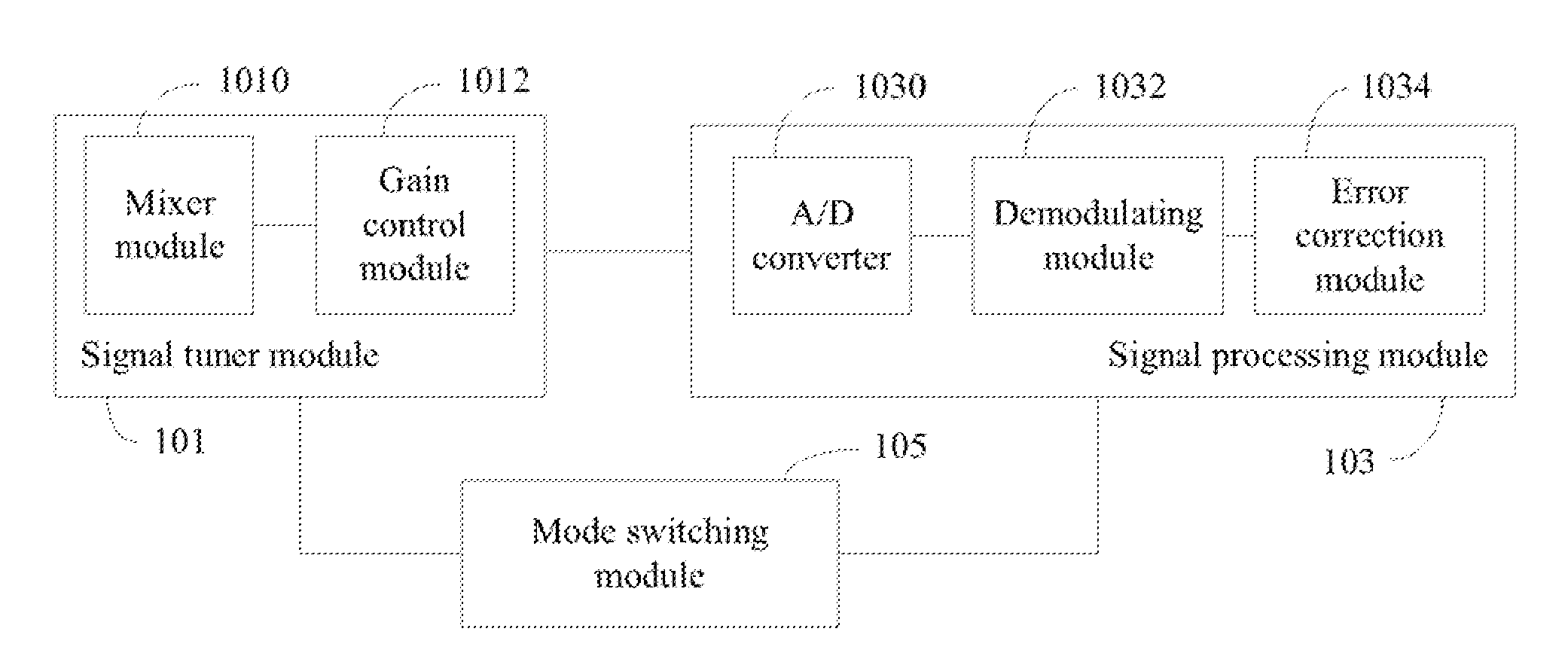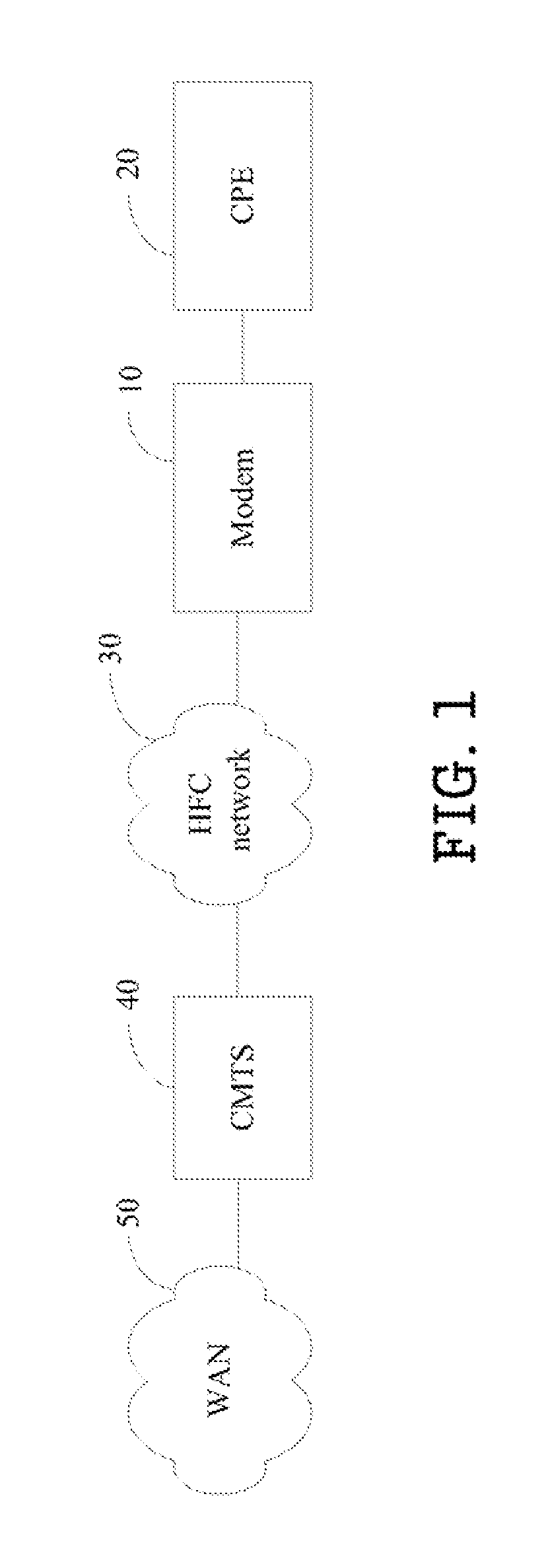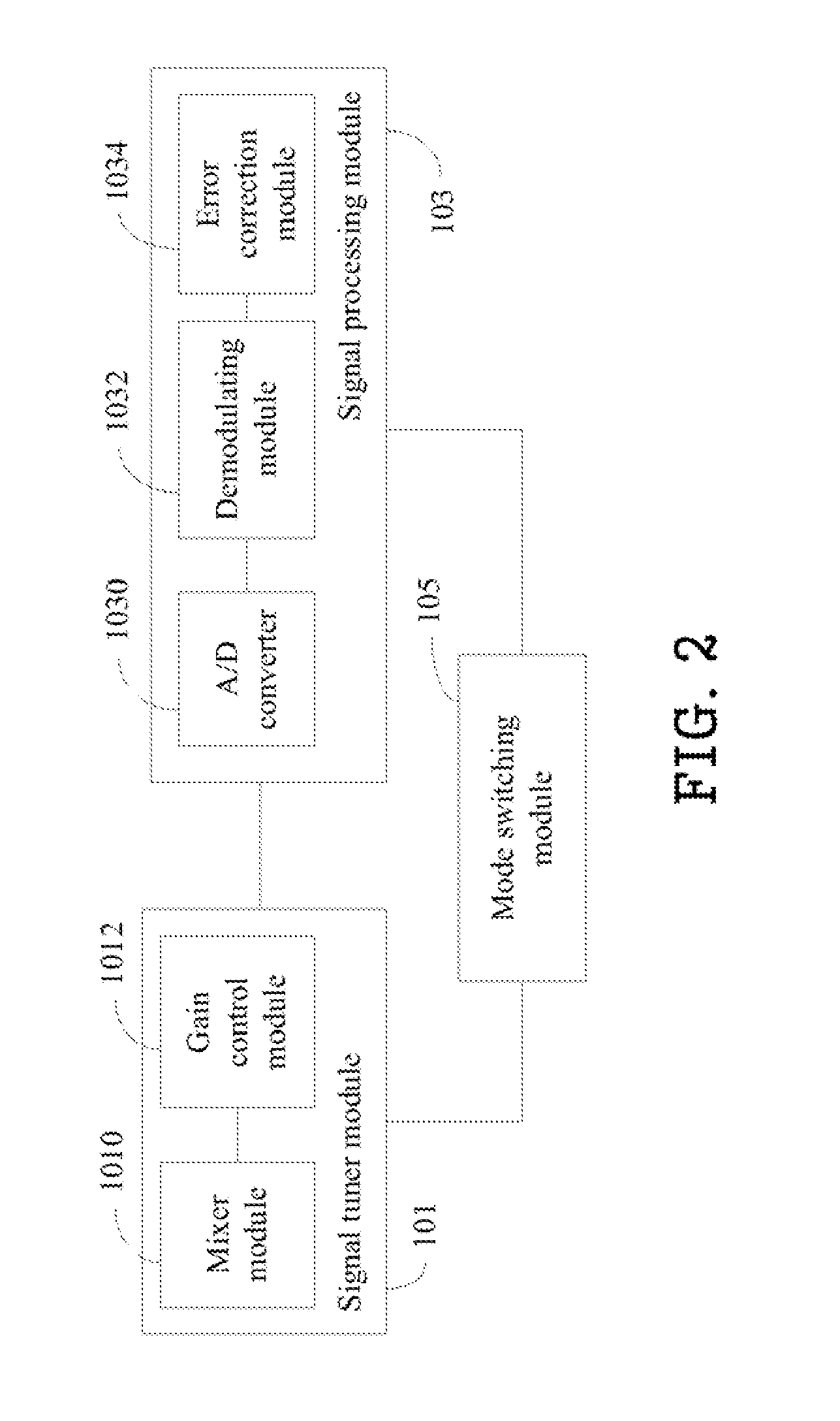Modem and method for switching operation modes thereof
- Summary
- Abstract
- Description
- Claims
- Application Information
AI Technical Summary
Problems solved by technology
Method used
Image
Examples
Embodiment Construction
[0013]FIG. 1 is a schematic diagram of a data-over-cable system of an exemplary embodiment of the present invention. In the exemplary embodiment, the data-over-cable system includes a modem 10, a customer premises equipment (CPE) 20, a hybrid fiber coaxial (HFC) network 30, a cable modem termination system (CMTS) 40, and a wide area network (WAN) 50. In this embodiment, the modem 10 may be a cable modem, and the CPE 20 may be a personal computer. The modem 10 may be in a data over cable service interface specifications (DOCSIS) operation mode, a European DOCSIS (Euro-DOCSIS) operation mode, or a Japanese DOCSIS (J-DOCSIS) operation mode.
[0014]The CPE 20 is connected to the modem 10. The modem 10 is connected to the CMTS 40 via the HFC network 30. The CMTS 40 is connected to the WAN 50. The transmission path over the data-over-cable system is realized at the head-end by the CMTS 40, and at each customer location by the modem 10. Thus, the CPE 20 accesses the WAN 50 via the modem 10, ...
PUM
 Login to View More
Login to View More Abstract
Description
Claims
Application Information
 Login to View More
Login to View More - R&D
- Intellectual Property
- Life Sciences
- Materials
- Tech Scout
- Unparalleled Data Quality
- Higher Quality Content
- 60% Fewer Hallucinations
Browse by: Latest US Patents, China's latest patents, Technical Efficacy Thesaurus, Application Domain, Technology Topic, Popular Technical Reports.
© 2025 PatSnap. All rights reserved.Legal|Privacy policy|Modern Slavery Act Transparency Statement|Sitemap|About US| Contact US: help@patsnap.com



